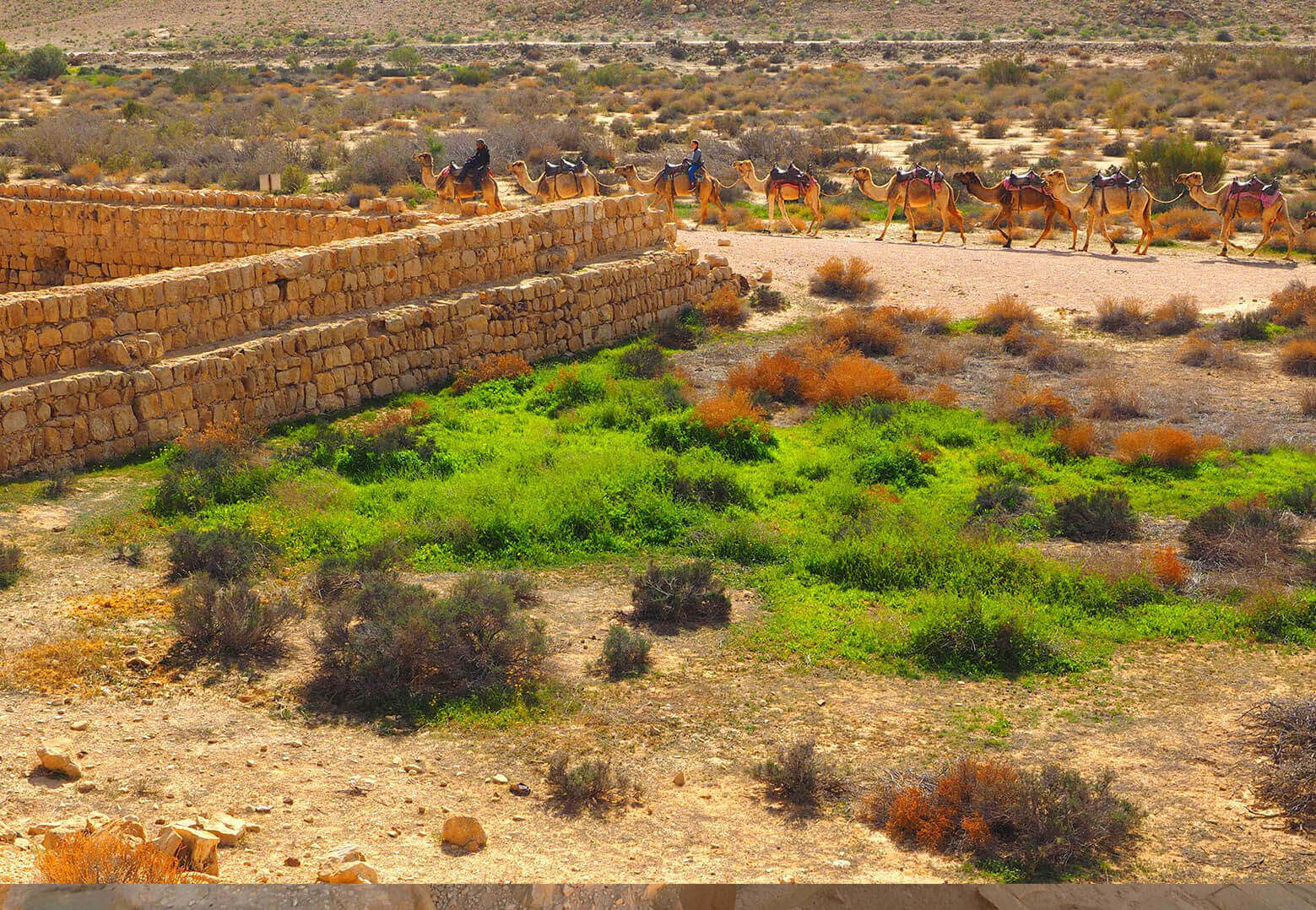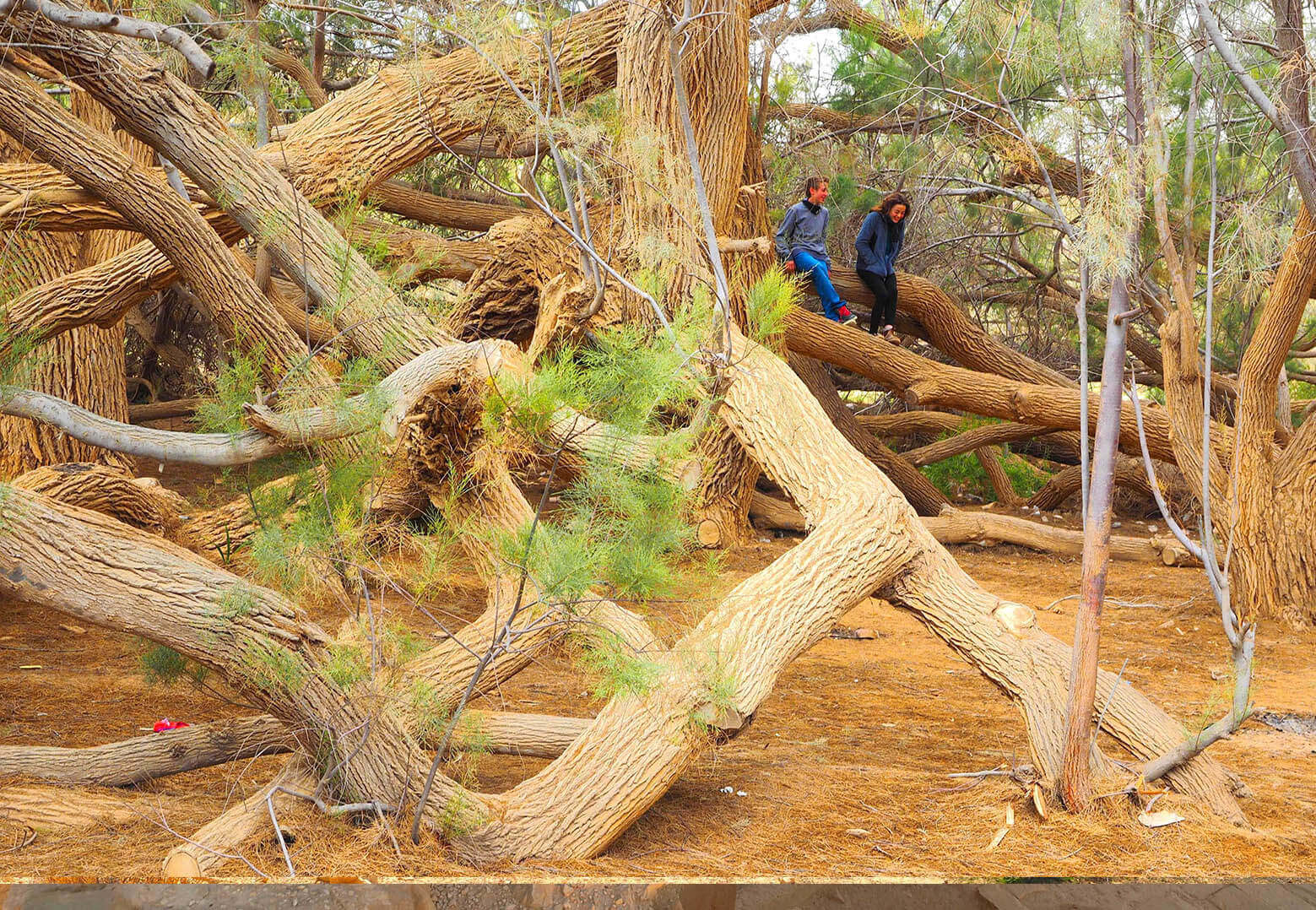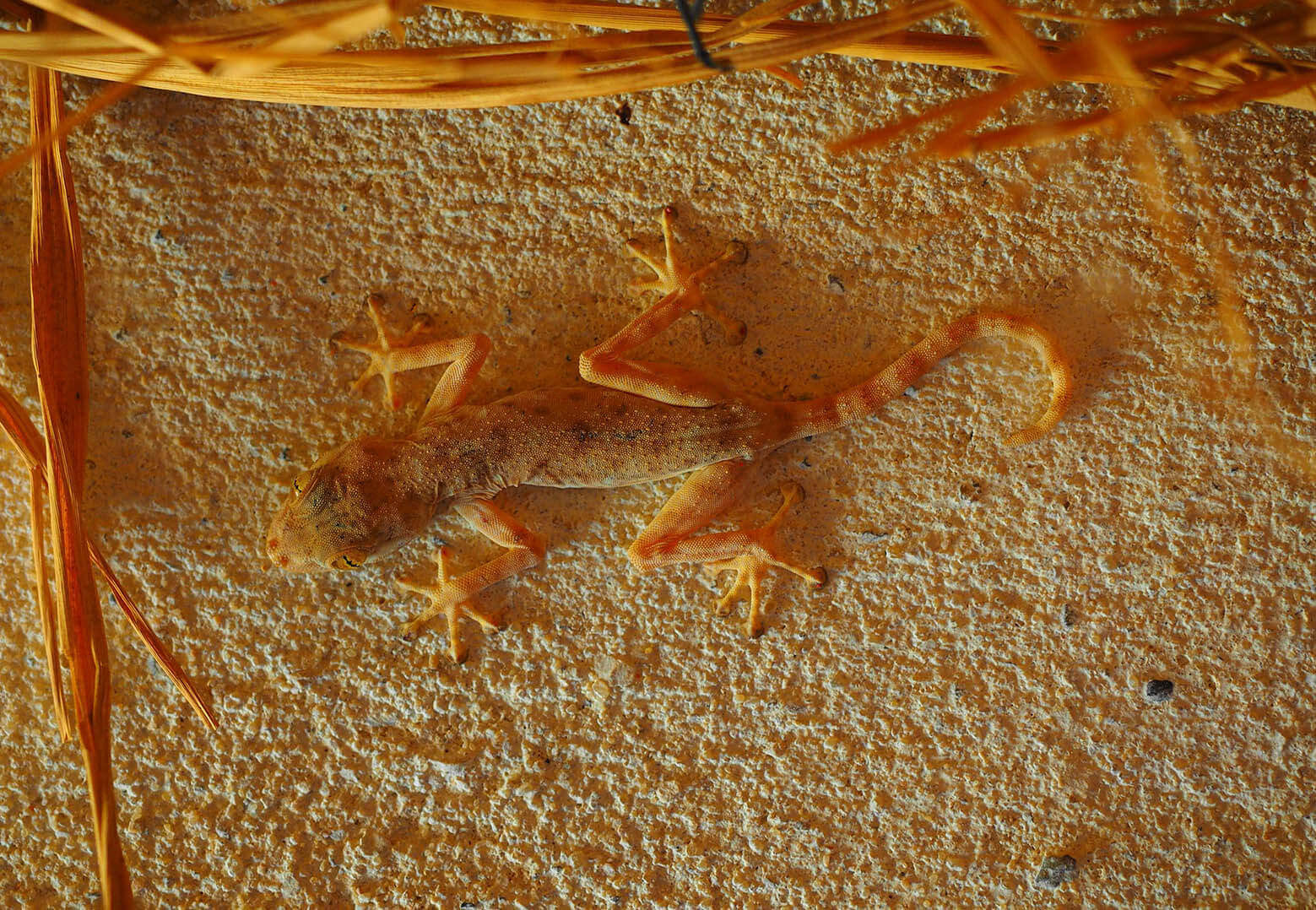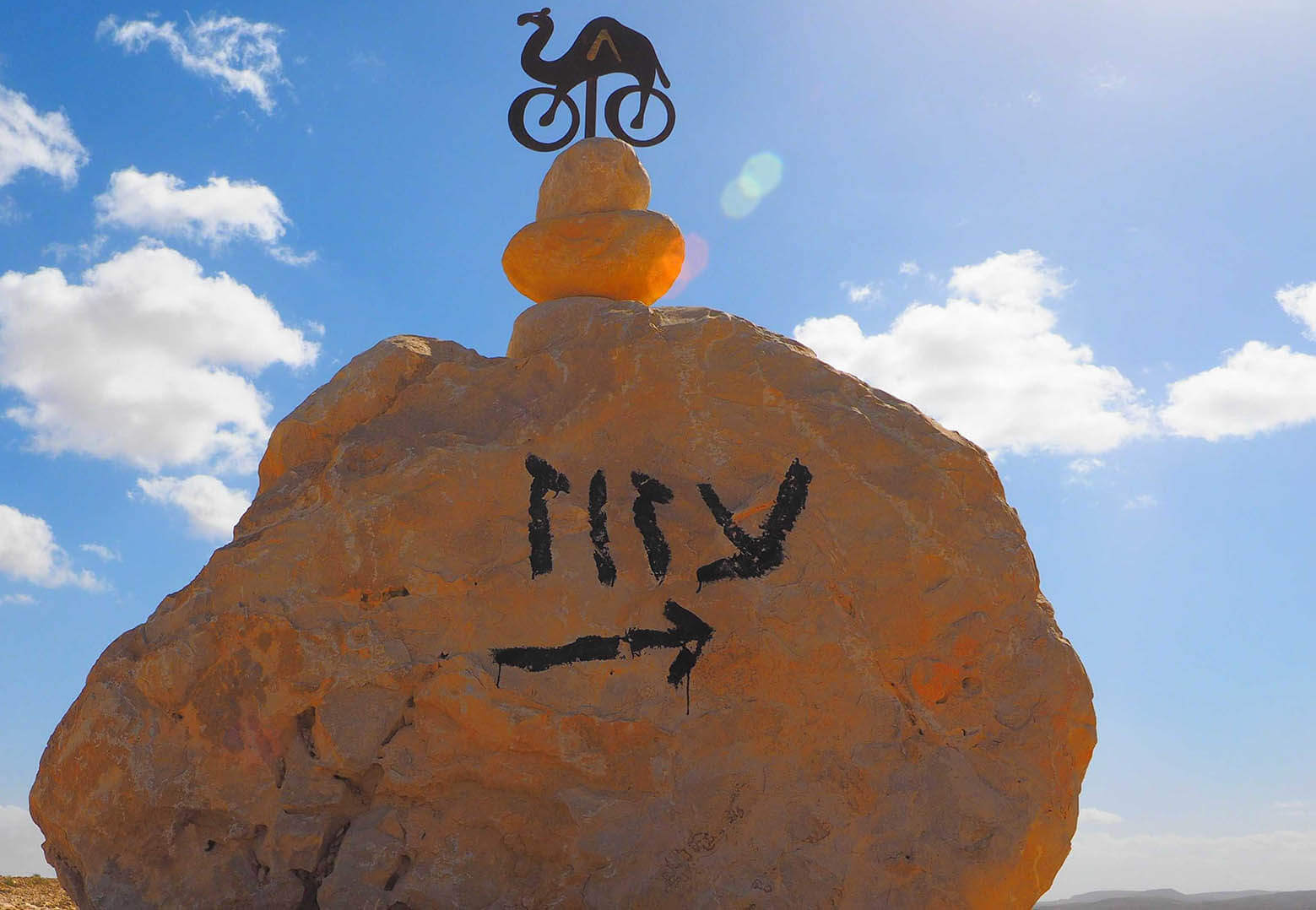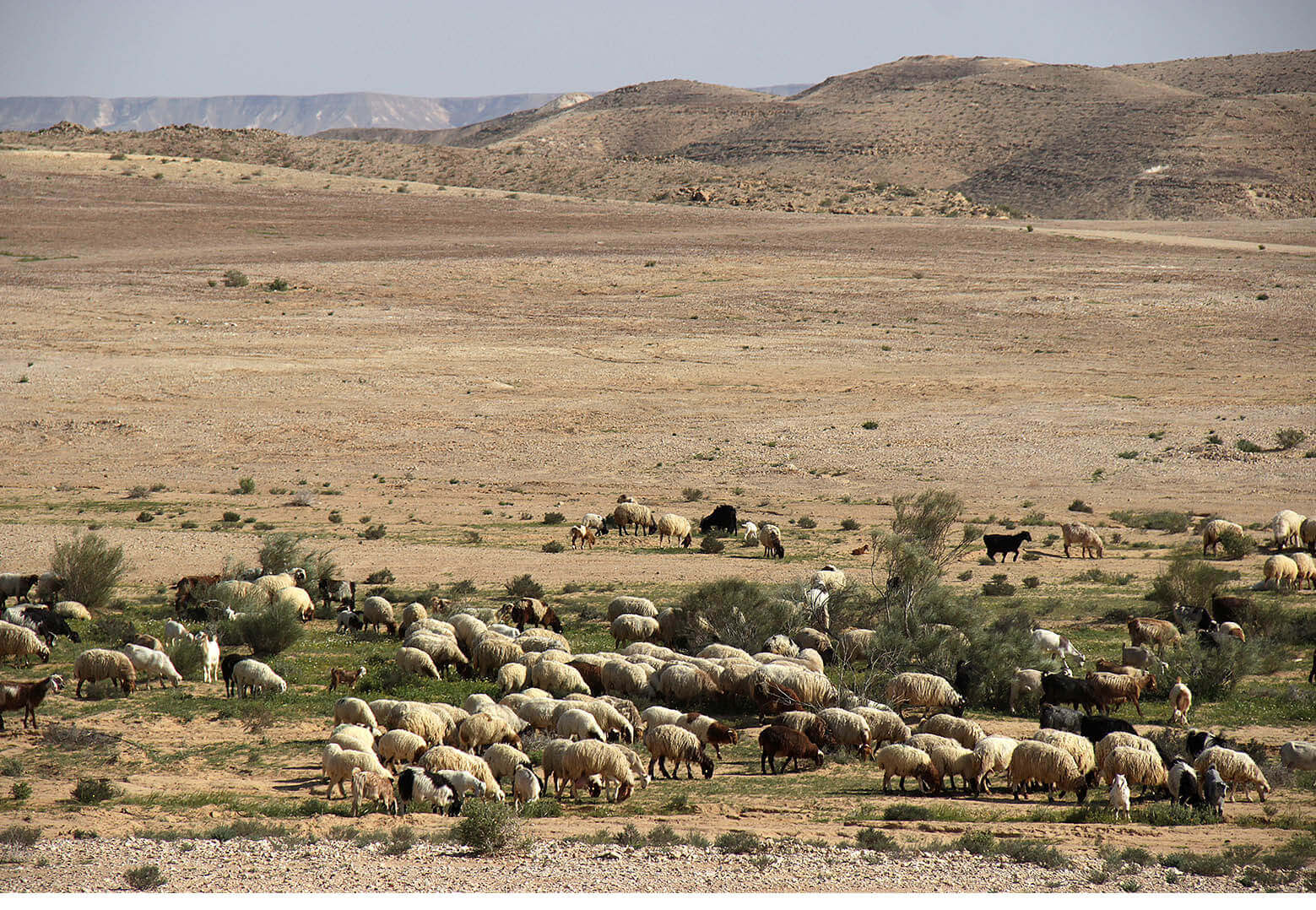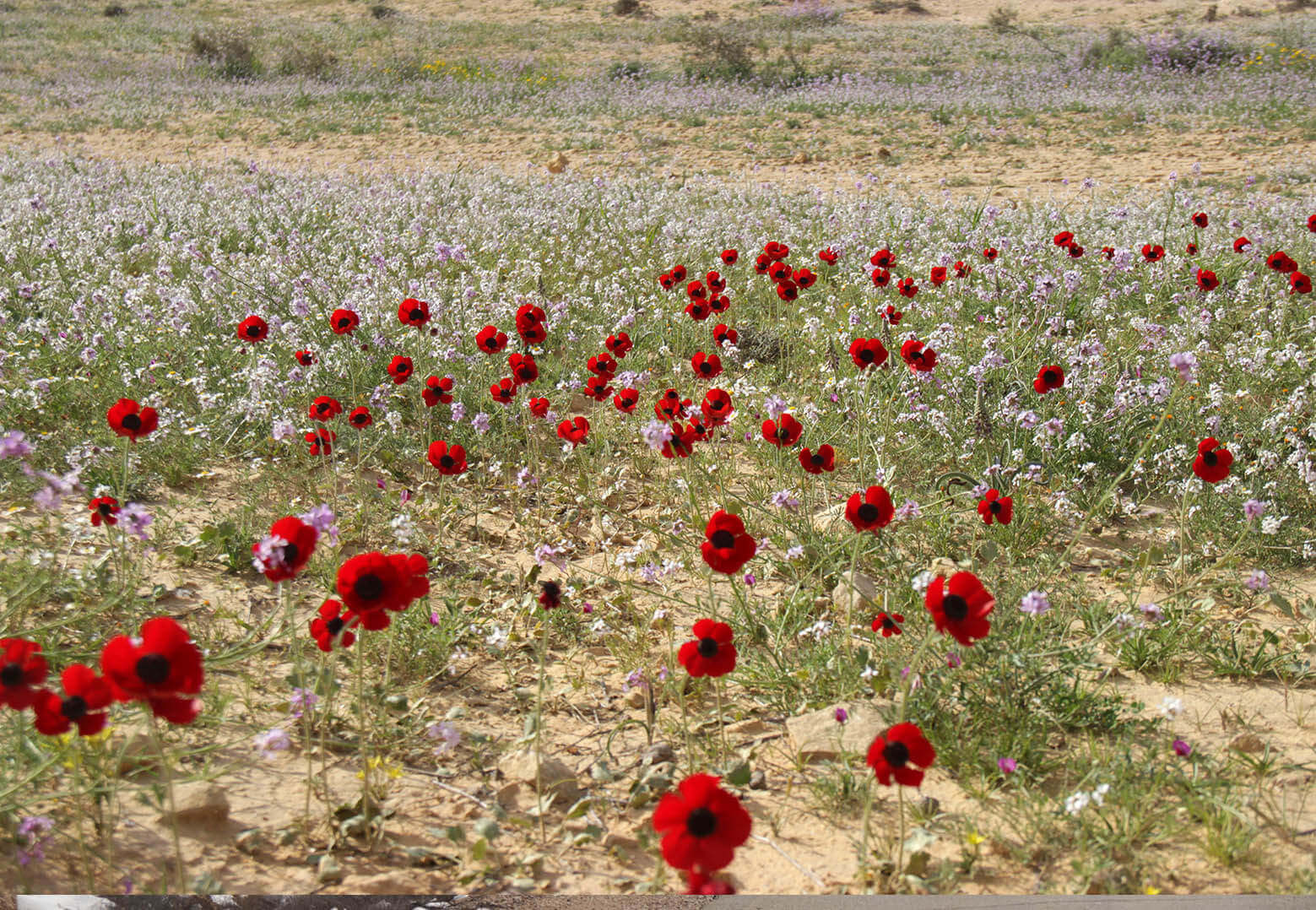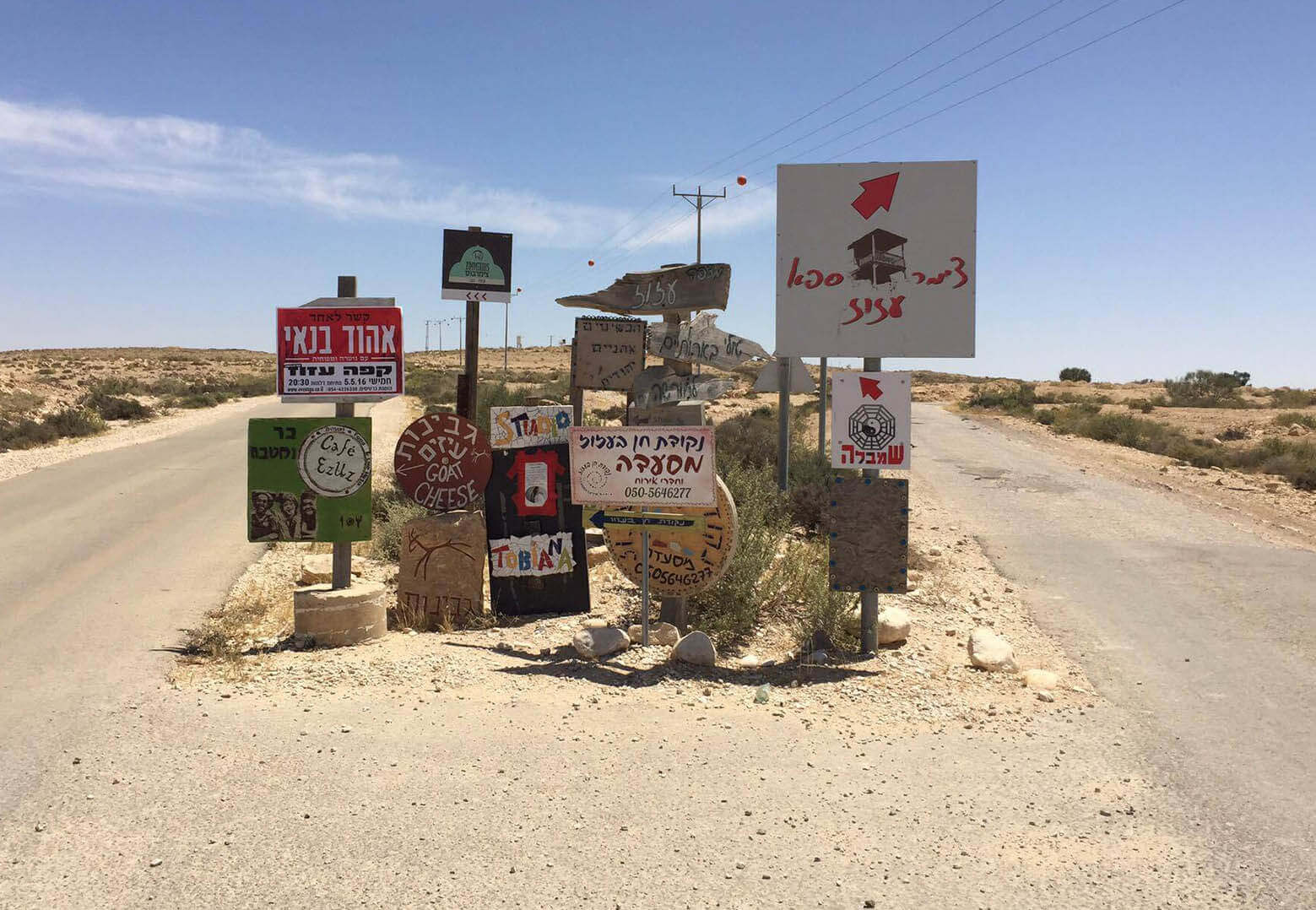Sorry, no dogs allowed!
Khan Be’erotayim is an oasis in the western Negev Highlands, on the Sinai coastal plain, with a grove of giant tamarisk trees and two ancient wells – which gave the place its Arabic name, Birayn or in Hebrew, Be’erotayim (i.e., two wells): Moses’ well and Aharon’s well. The trees and the wells are fed by a superficial layer of groundwater, one that had served the prehistoric hunters and gatherers some 55,000 years ago.
The superficial aquifer and its proximity to the Shur road (Genesis 26:18) enabled many archaeological artifacts to be left behind, attesting to human settlement throughout the course of history: flint manufacturing, inscriptions and drawings on rocks, various ceramic shards, agricultural terraces, and a large Byzantine water-catchment basin, one of the largest in the Negev.
The region is rife with the remains of many cultures, having had wave after wave of settlement and destruction from the dawn of history and to this very day.
From the days of `Uziyahu, King of Judaea, through the Nabatean and Byzantine eras and until to the start of the 20th century – when this area gained new strategic significance during the struggle between the Commonwealth forces and the Ottoman Empire.
Later, at the beginning of the 21st century, it became the location of modern forms of settlement.
This region has unique and interesting flora, such as: Atlantic terebinths (oaks) – powerful, ancient giants, almonds, buckthorns, sumachs and carpets of amazing flowering plants after each rainy season. There is also a stable population of animals, some of which are unique to the Negev Region.




